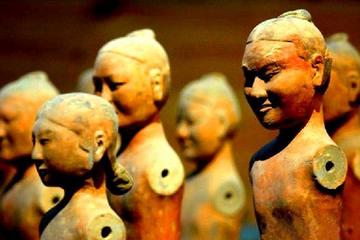Tomb of Emperor Jingdi (Hanyangling)
TIME : 2016/2/22 10:15:05

Tomb of Emperor Jingdi (Hanyangling)
In addition to the world-famous terra cotta warriors, another excavation site of a famous Chinese emperor can be found in Xian. Emperor Jingdi reigned from 11-141 BC and unlike other emperors, he had a very passive approach to ruling. As a staunch follower of Confucianism, he was a capable leader and tried to improve the lives of his subjects by reducing taxes and avoiding diplomatic conflicts. Accordingly, his reign is considered a golden era for the people and the imperial family and was only once marred by a successfully averted rebellion.
In the typical hierarchical fashion of ancient China, the Tomb of Emperor Jingdi itself can be found at the very center of the complex, while various smaller burial pits and tombs are scattered around it. Visitors can see the over 40,000 excavated clay figures of animals, warriors and officials – mostly miniature forms of their real-life counterparts – and other artifacts in the various pits in the subterranean Hanyangling Museum by donning blue shoe covers and carefully walking on a glass floor over the ongoing excavation site. While some might consider the life-sized terracotta warriors more impressive, this miniature version allows a closer look at the small sculptures. Although their dress made of cloth and wood has long ago decayed and the figurines are now naked, they, together with various prepared information such as a 3D film offer a detailed insight into the social structure and life at the time of the Han Dynasty.
Practical Info
From the beginning of March to the end of November, the museum is open from 8:30 a.m. to 7 p.m., while during the rest of the year the site closes an hour earlier at 6 p.m. The Tomb of Emperor Jingdi is located about 20 kilometers north of Xian in Zhangjiawan Village. You can get there by taking the bus number 50, 207, 228, 230, 328 or K616 to Xian City Sports Park and then hopping on the Tourist Bus number 4 the rest of the way to the stop Yangling Mausoleum.
